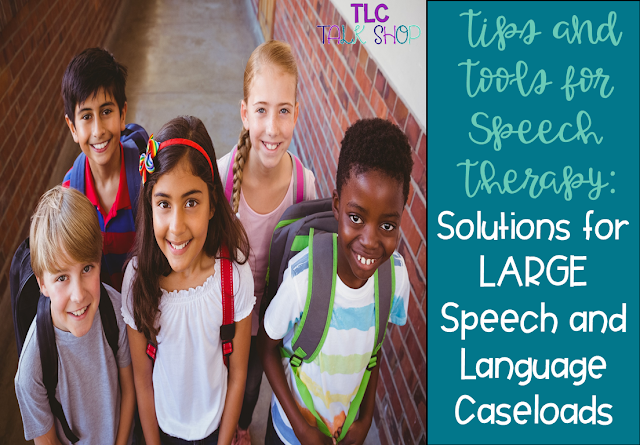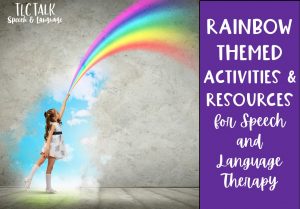For many of us, we have experienced the overloaded caseload. You know, the caseload consisting of 60+ students and all of them have Individual Education Plans with a lot of service delivery time to be upheld. How can we service them all successfully so that the students get what they need and make maximal gains?! I know I have felt that way several times that I had to come up with some creative ways to get their needs met. Here are some suggested solutions:
Use a Modified 5-7 Minute Articulation Speech Model: If you have an iPad this has become so much easier! If you have any articulation app or some of the great No Print Articulation resources found on Teachers Pay Teachers, you can simply go class to class daily, set a timer on your iPad, and collect data for each student that would benefit from the brief daily intervention. In the early days, prior to having my iPad, I had huge notebooks full or articulation pages and would go room to room with my pull cart. If you don’t have an iPad, using a cart and your favorite articulation pages still works well. I found that this model worked for students working at all levels of articulation with the exception of isolation level. When students were working at the spontaneous speech level, I showed a picture for narration or just maintained a conversation with them during the 5-7 minutes.
Use a Centers (Stations) Model: Do your school sites have Fun Friday? I found that incorporating Centers Therapy on Fridays maintained students’ participation and continued the “fun friday” feel. I cycle the students through four different centers typically in groups of two with students remaining in each center for roughly 5 minutes. I found this made it easier to keep students engaged in therapy, practicing their speech sounds, learning monitoring skills, using movement to help with learning, and providing opportunities for me to easily obtain data with each session and provide additional reinforcements as needed. I typically use centers that include the following modalities: writing, tactile, voice, and movement. Check out this post to learn more about using Speech and Language Stations.
 Use a 3:1 Flexible Service Model: I have gone to several trainings about this model but truthfully, I have never incorporated into my own speech schedule. Not all districts support this model and if you have not had training to incorporate it appropriately, you may make more work for yourself and leave yourself open for legal issues since you would need to figure out the math for the IEP. With the 3:1 model, the SLP sees the students’ for three weeks and have one week for collaboration with other specialists and the general education teachers, consultation, assessments, etc… You can learn more about the 3:1 model from Speech Room News and Word of Mouth.
Use a 3:1 Flexible Service Model: I have gone to several trainings about this model but truthfully, I have never incorporated into my own speech schedule. Not all districts support this model and if you have not had training to incorporate it appropriately, you may make more work for yourself and leave yourself open for legal issues since you would need to figure out the math for the IEP. With the 3:1 model, the SLP sees the students’ for three weeks and have one week for collaboration with other specialists and the general education teachers, consultation, assessments, etc… You can learn more about the 3:1 model from Speech Room News and Word of Mouth. Embrace Mixed Groups: Sometimes scheduling leaves us with limited flexibility and we often have mixed groups working on a wide variety of skills. Embrace these groups! I found that the easiest way to work with these groups were to incorporate open-ended games, craft activities, literature, and materials made for mixed groups.
If you solved this situation in another way, I would love to hear about it in the comments!
Want more great tips, tricks, and ideas for successful speech therapy? Subscribe to our , or visit us on Instagram, Pinterest, or Facebook.




